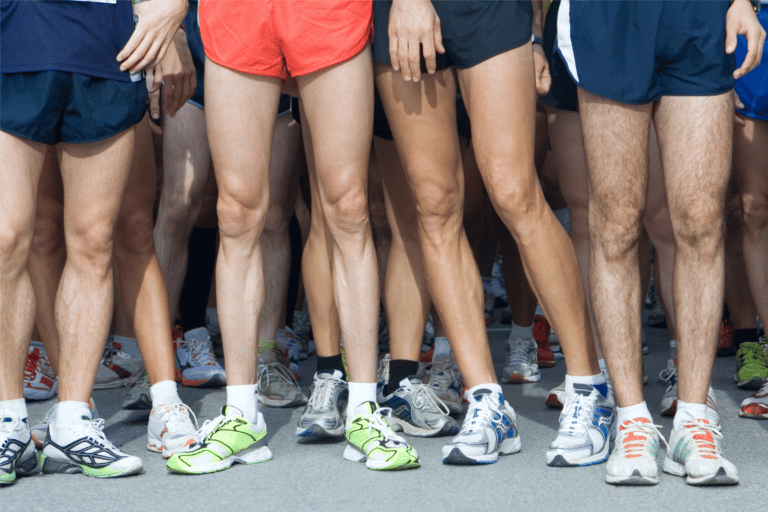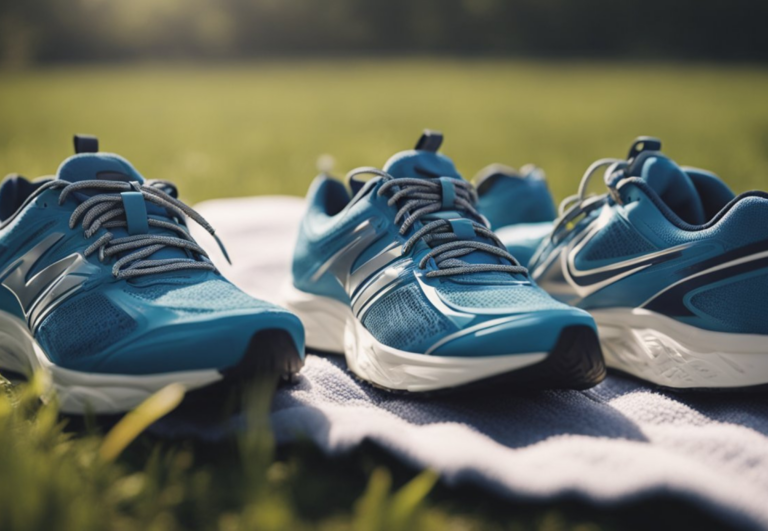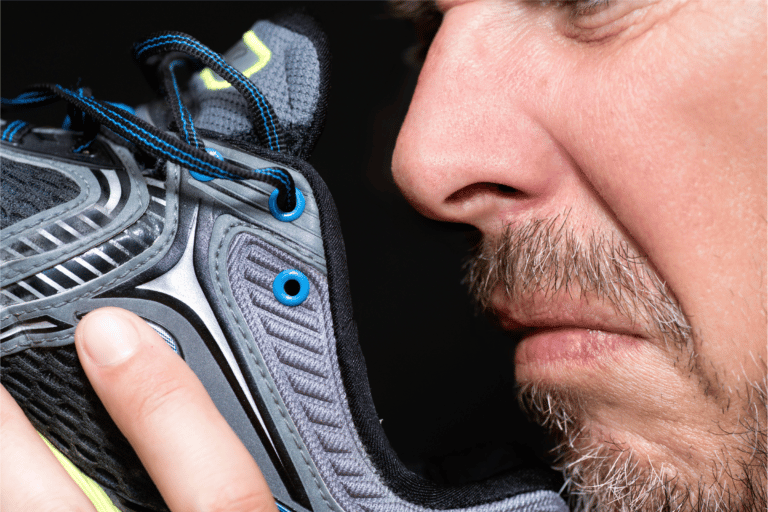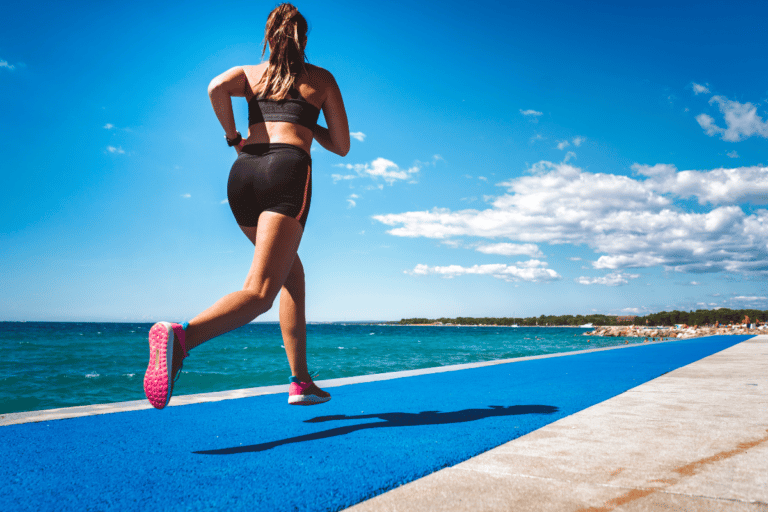Runners And Long Socks: Potential Benefits for Compression, Protection, and Sweat!
The clothes make the man, or so the saying goes, and this seems to be especially true if the man is a runner. While you can start running in just about any outfit, the comfort, support, and sweat-wicking properties of specific gear can transform your run. Is this true for socks as well? Why do runners wear long socks?
Runners wear long socks because they protect their legs from debris scratches, add additional warmth during the winter months, and help absorb sweat to keep it from dripping down into the shoe. Trail runners and runners more prone to sweat may favor longer socks over shorter socks for this reason, but most runners can benefit from the coverage.
Keep reading to learn the purpose of long socks and how they differ from shorter ankle socks, and mid-range socks while running.
What is the purpose of long socks when running?
Long socks are a multi-purpose solution that can help you under different weather and running conditions. There are two different cuts of socks to consider when purchasing a pair of long socks.
Most runners will choose crew-cut socks or compression running socks. Both will protect the runner from minors injuries resulting in road debris, prevent sweat from dripping down their leg and into their shoe, and help maintain blood flow throughout the run.
Crew-cut socks range between 6 to 8 inches and provide moderate protection against debris scratches. Runners who deal with excessive sweating benefit most from crew-cut socks, as they are known to be more absorbent than other socks cuts.
Alternatively, calf-cut long socks end just below the knee and are primarily used in compression socks. Compression socks apply pressure to your calf and help you to maintain proper blood flow which reduces swelling and eases overall discomfort while running.

Furthermore, studies have shown they may also prevent you from feeling dizzy or light-headed when standing up since it prevents blood from rushing to your head as quickly.
Runners wear compression socks to prevent spider bites, improve running performance during lengthy runs, and specifically help those who suffer from varicose veins.
Does running in long socks make a difference – pros and cons
Running can make a significant difference, depending on the conditions outside. Short socks flourish in the summer months and when running strictly on pavement, whereas long socks protect against debris and rough weather conditions.
Choosing a longer sock over a shorter sock during the winter months may help trap in heat, which is especially useful on some of the coldest days of the year. Runners who choose traditionally shorter socks may find their lower legs, ankles, and/or feet losing heat too quickly, causing a numbing sensation while running. This could impede your run significantly, eventually leading to a point where you may not be able to continue running for longer stretches.
If you’re a runner who enjoys trekking through trails filled with trees and long grass, a shorter ankle sock may not be an ideal choice for you. Long socks aid you during a trailing adventure since they offer additional padding to protect against scrapes from tree branches and other debris you encounter during a run.
It could be the difference between having an enjoyable, successful run and one where you get injured enough that you may have to consider stopping to treat wounds on your ankles and legs.
There are three types of compression socks to consider, including:
Nonmedical support compression socks
are ideal for the average runner who seeks to prevent tired, achy legs and wants to improve overall blood flow. The compression is evenly distributed throughout the entire sock with elastic support. These can be purchased at your local pharmacy or online and don’t require a prescription.
Graduated compression socks
Graduated compression socks are necessary for runners who suffer from medical conditions such as peripheral edema, orthostatic hypotension, and varicose veins.
The compression is strongest at the ankle, gradually lessening as it goes up your calf. These types of compression socks often require a prescription as a professional fitting helps tailor them to properly fit your leg.
Anti-embolism compression socks
reduce the chances of deep vein thrombosis from occurring in people. These are less likely to apply to you as a runner since they are specifically created for those who aren’t very mobile.
How do long socks help runners when running?
If you’ve ever seen a marathon runner in striped knee-highs, you might have thought they were just making a fashion statement. While the rainbow stripes may have been fashion-forward, the socks themselves were purely practical.
Long socks help runners in a multitude of ways, including:
- Trapping heat, which provides additional warmth during cold weather runs.
- Improving blood circulation in your legs is an important factor for those who suffer from varicose veins.
- Adding protective padding to your legs and ankles to help prevent scrapes and injury.
- Preventing your legs from getting too achy and tired, helping you to push harder during your run.
- Reducing orthostatic hypotension helps reduce the chances of getting lightheaded or unsteady when you stand or run.
- Increasing energy by evenly distributing oxygen, which your muscles require to increase ATP, a source of fuel for your body to stay energized.
- Decreasing fluid from leaking into the muscle’s veins, is a known factor in reducing overall swelling.
- Supporting muscle recovery through the infamous “RICE” recovery method, which reduces the stress you place on your legs and ankle during a run.
- Reducing the amount of lactic acid build-up that occurs during extensive runs, adding a soothing effect to your post-recovery.
- Improving overall performance by preventing injury, allowing you to train harder without worry.
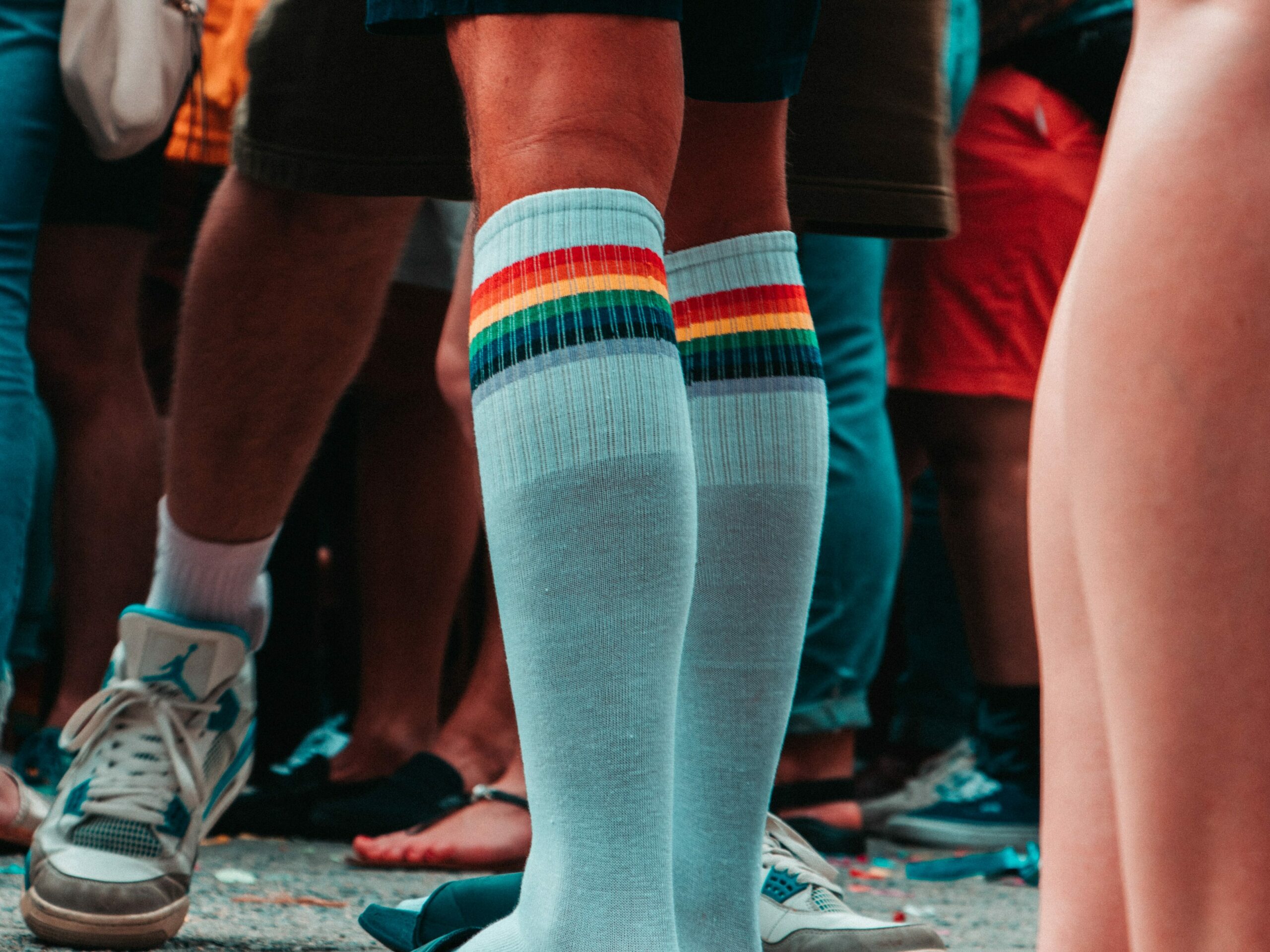
Most runners benefit greatly from wearing long socks during their runs. However, it is cautioned that if you are prone to overheating, long socks may not be a suitable choice for you.
Since they provide additional warmth, this may only increase your chances of overheating unless worn in only cold weather conditions. This is especially true for crew-cut socks, as they aren’t made to be as breathable as their counterpart, the compression sock.
Are long socks necessary for running?
Now you know the many benefits of running in long socks, but are they actually necessary?
Even for the average runner, long socks could aid your performance and could potentially help improve your running times. Your situation will determine the best type of long sock for your run.
For example, a crew-cut sock may appeal to those who live in cooler climates or consistently run through rough terrain.
Comparatively, compression long socks help most runners in any situation.
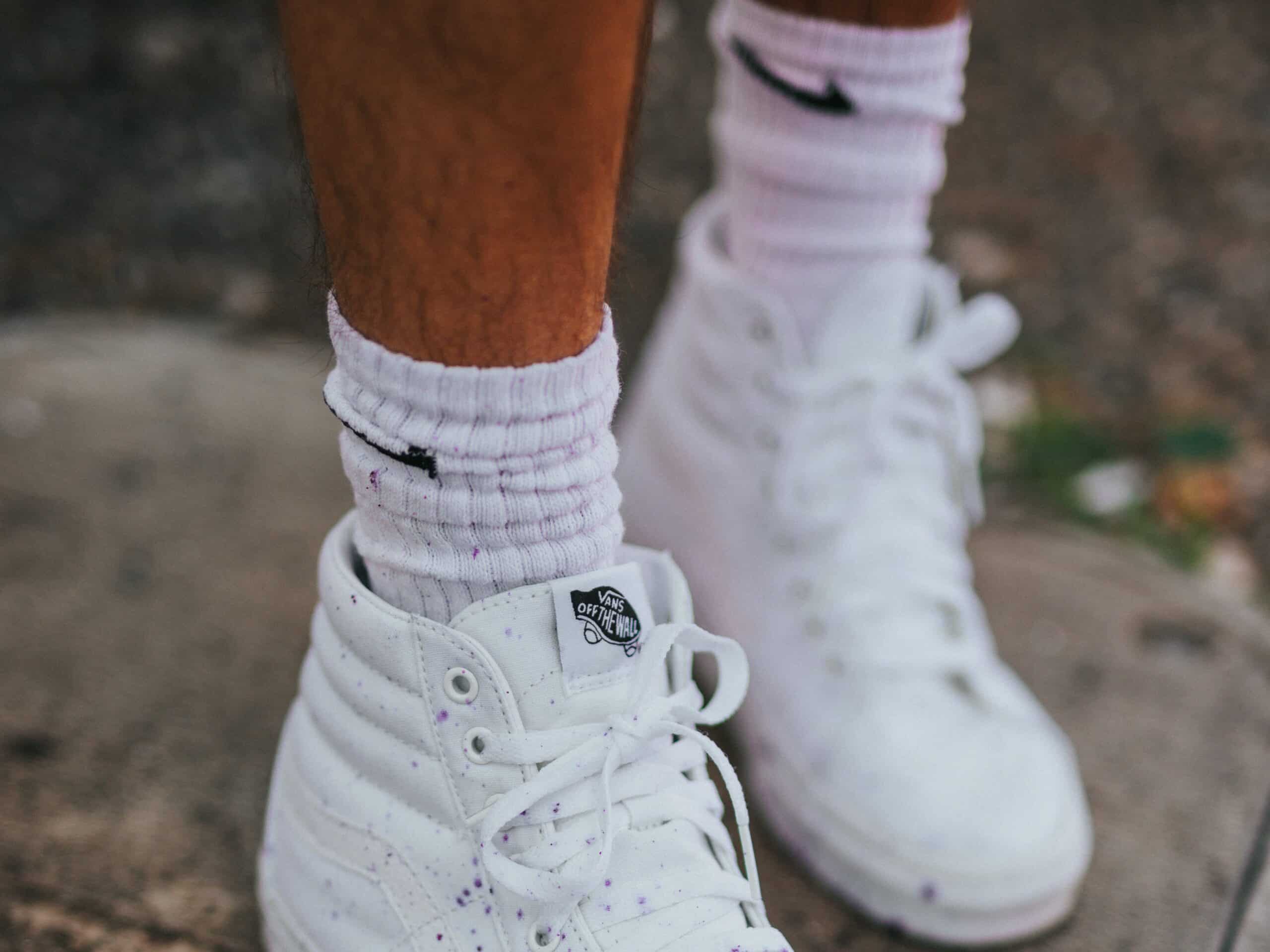
Each compression sock offers a different level of protection, which may benefit certain runners over others.
Choosing between long and short socks and the type of sock in each corresponding category depends heavily on various conditions, from cold weather to trail running.
Cold weather
Cold weather is brutal against runners and can cause serious complications depending on your overall tolerance of the cold. While running naturally increases your body heat, it may not be enough to combat it entirely.
Long socks help to mitigate the risk of injury while running in the cold by adding a protective layer that helps to trap heat. When running in extreme cold, it is advised to wear both compression socks and crew-cut socks to ensure you trap enough heat to stay warm.
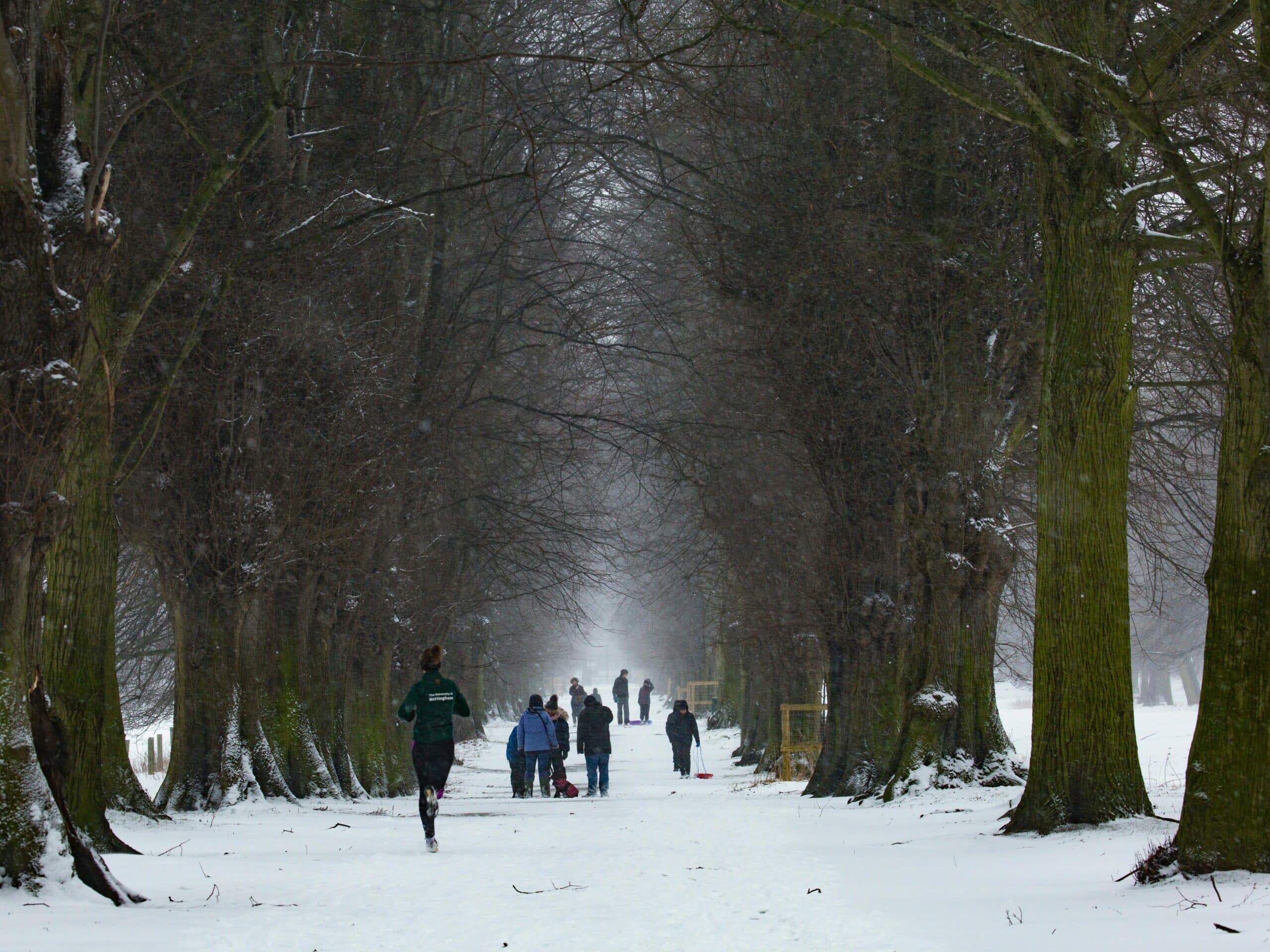
Some of the most common injuries runners face while running during the winter months include metatarsal and tibia stress fractures, as well as tendon and muscle tears. When your body is combating unpredictable cold conditions, it begins shivering. Shivering is a contributing factor to the above injuries.
Trail running
Running on a smooth pavement differs significantly from trail running. The terrain is uneven on trails, and many unseen obstacles could cause unexpected injury.
While a good pair of running shoes is required to help combat some of these issues, it doesn’t resolve all of them. This is where you’ll benefit most from wearing long socks too, as it helps to close the gaps in injury prevention. Crew-cut and compression socks aid in trailing running safety in different ways, making it possible to wear both while running, especially on cooler days.
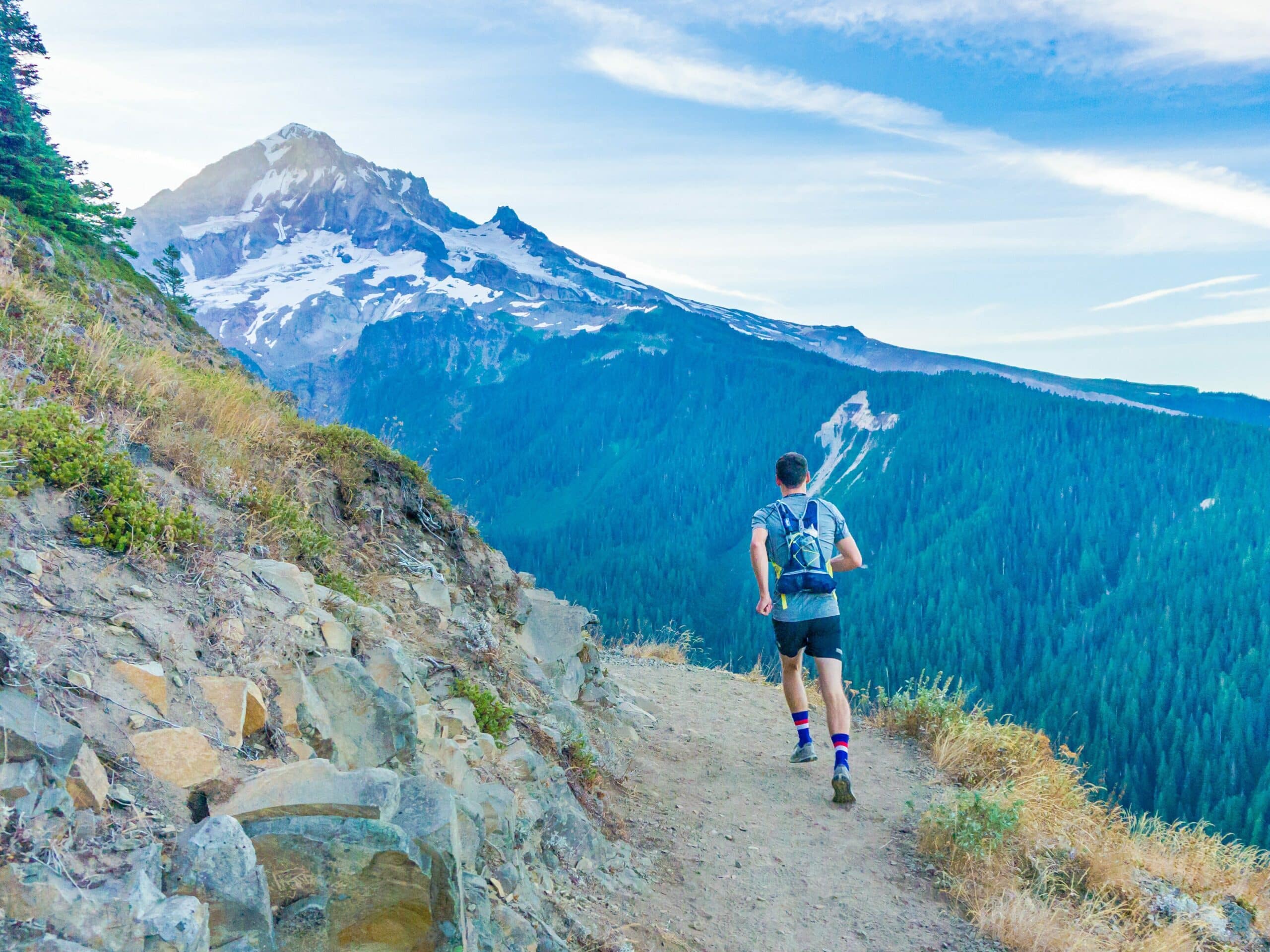
Crew socks offer more protection, especially around the ankle and lower portion of the calf. This prevents branches, sticks, and random debris from puncturing through and scraping your legs. While it seems trivial, these scraps can cause serious injury depending on the size of the debris and the angle at which you hit it.
Compression socks extend much higher, offering protection to your entire calf, rather than just the lower portion. This helps pad the rest of the leg, reducing injury even further. Since compression socks are form-fitted, they also prevent bugs such as spiders, fleas, sand flies, and ticks from latching onto your legs and biting you. Compression socks can prevent not only unsightly bites but also the diseases these bugs carry such as Lyme disease.
How long should socks be for running?
Socks come in several lengths and as a runner, it’s important to understand the distinction between each so you are equipped with the best pair no matter the condition, type of race, or location.
There are eight common types of socks to consider as a runner:
- Toe-cover socks
- No-show socks
- Linear socks
- Low-cut socks
- Ankle socks
- Crew-cut socks
- Compression socks
- Knee-high socks
Keep reading to explore each type of sock in detail, including whether or not they’re recommended for runners.
Toe-cover socks
Toe-cover socks are typically worn with no-heel designs, such as Crocs. However, some runners who prefer ultra-lightweight designs may prefer less coverage to increase performance.
Toe-cover socks cover the toes and upper portion of the foot to prevent sweat and blisters from occurring while leaving the rest of the foot uncovered. While practical in some ways, toe-cover socks are not recommended for the average runner.
No-show socks
No-show socks only cover your feet, leaving your ankles and calves exposed. This is another design preferred by ultra-lightweight runners who want slightly more coverage than a toe-cover sock.
Just like with toe-cover socks, it’s important to have an extremely durable and comfortable shoe that doesn’t chaff your exposed ankles. This is not a traditional running sock for the average runner.
Linear socks

Linear socks, also known as extra low-cut socks, benefit runners who enjoy the no-show sock look, but still want the added benefit of sweat absorption, comfort, and extra padding.
Runners may find this sock appealing, but it may not give you full ankle coverage, depending on your running shoe’s overall design. Linear socks are not recommended socks for the average runner but may fit the needs of some minimalists.
These socks are generally popular with crowds who prefer to wear low-top sneakers but don’t want to risk chaffing the ankle.
Low-cut socks
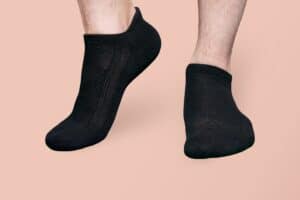
Low-cut socks, interchangeably known as ped socks, follow a design like linear socks, but are slightly longer and cover more of your ankle.
Runners typically choose this type of sock as it provides just enough coverage to prevent chaffing, regardless of your sneaker’s design, without overdressing your feet.
Runners prefer this type of sock during the late spring, summer, and early fall months when the weather ranges from warm to hot. It’s also popular for both marathon and long-distance runners as it adds just enough protection and sweat absorption without the risk of overheating.
Ankle socks
Ankle socks also referred to as quarter socks or anklets, cover above the ankle bone and stop somewhere near your shin. Ankle socks may be used by runners, but they don’t offer any additional protection than low-cut socks if running is your only concern.

Most running shoes are low-cut, making a low-cut or crew-cut sock more feasible depending on conditions.
These are primarily used by basketball players who wear mid to high-top shoes since they provide enough coverage to protect the ankle from chafing.
Crew-cut socks

Crew socks, or mid-calf socks, are considered the “classic” sock and the most common socks purchased, covering 6 to 8 inches above your ankle, or around the middle of the calf.
These socks are popular amongst trail runners as they offer much-needed protection against debris. They are also great for late fall, winter, and early spring, where weather conditions are often more frigid, and extra layers are required to keep warm while running.
Compression socks
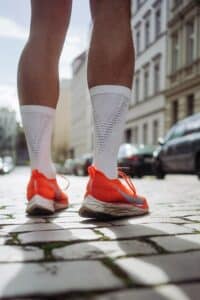
Most compression socks could also be classified as either crew-cut or knee-high socks, but they are uniquely different based on their material and general use.
Runners and most athletes benefit from compression socks as they can help increase your running speeds and lessen fatigue associated with longer runs. Additionally, most compression socks are made of a breathable material, which prevents overheating. They also help prevent scraps from surrounding branches.
Compression socks use elastic bands that make the sock form-fitted to your leg, increasing circulation and improving running performance. They also have medical uses for conditions like varicose veins and lymphoedema.
Knee-high socks
Knee-high socks are long socks that cover your entire leg and stop right before your knee.

Knee-high socks are usually made of cotton, which makes them both thicker and more durable than compression socks. This is ideal for runners who want to generate more heat during extremely cold winter days.
These socks are perfect for runners who live in the upper northern hemisphere, where winter days can frequently drop below-freezing temperatures.
If you prefer to wear compression socks, you can double up by putting knee-high socks over them. This combines the medical benefits associated with compression socks and the added comfort, warmth, and support of the knee-high sock.
Long socks have their place in the running world
As a runner, it’s ideal to have all the proper gear for running. This includes having the right pair of socks for any occasion, regardless of weather, conditions, and terrain. Long socks may not be advantageous for every occasion, but they do provide many added benefits during rougher terrain and cooler weather conditions.
Runners can benefit from having several pairs of long socks at their disposal, ranging from crew-cut socks, compression socks, and knee-high socks. See how they make you feel and try different combinations and note how practical they are for you and during which events or terrain types you see the most benefits.
Remember, every runner is unique, so there are no one-size fits all answer. But, for the average runner, long socks have their advantages.

